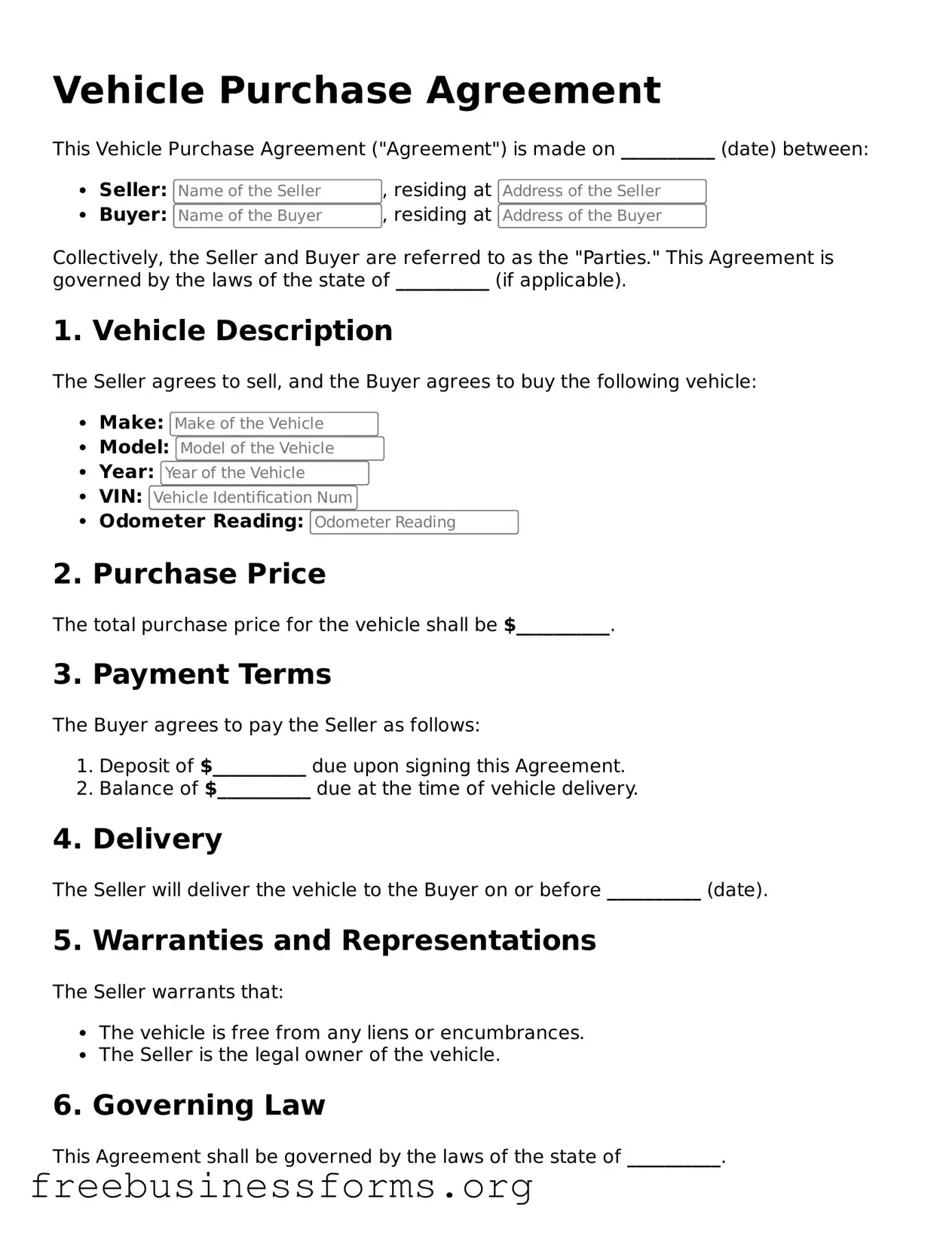Vehicle Purchase Agreement
This Vehicle Purchase Agreement ("Agreement") is made on __________ (date) between:
Collectively, the Seller and Buyer are referred to as the "Parties." This Agreement is governed by the laws of the state of __________ (if applicable).
1. Vehicle Description
The Seller agrees to sell, and the Buyer agrees to buy the following vehicle:
2. Purchase Price
The total purchase price for the vehicle shall be $__________.
3. Payment Terms
The Buyer agrees to pay the Seller as follows:
- Deposit of $__________ due upon signing this Agreement.
- Balance of $__________ due at the time of vehicle delivery.
4. Delivery
The Seller will deliver the vehicle to the Buyer on or before __________ (date).
5. Warranties and Representations
The Seller warrants that:
- The vehicle is free from any liens or encumbrances.
- The Seller is the legal owner of the vehicle.
6. Governing Law
This Agreement shall be governed by the laws of the state of __________.
7. Signatures
By signing below, the Parties agree to the terms of this Vehicle Purchase Agreement.
______________________________
Seller's Signature
______________________________
Buyer's Signature
